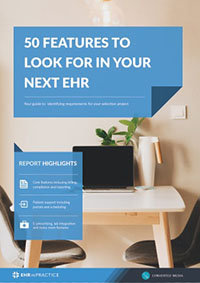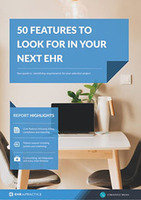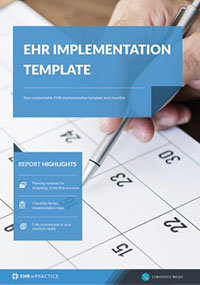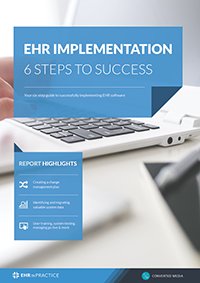How your EHR can help you avoid medical errors
According to a study published in The BMJ medical errors are the third leading cause of death in the U.S, with more than 250,000 Americans dying each year from preventable medical errors.
The economic burden of these errors according to Wolters Kluwer’s Journal of Health Care Finance may approach up to $1 trillion in “lost human potential and contributions.” This introduces questions about what type of role EHRs can play in reducing medical error risk.
The case for EHR uptake
EHR adoption has been statistically linked with a reduction in the risk of medical errors. A study conducted by the Carnegie Mellon University Living Analytics Research Centre indicates that more widespread EHR adoption accounted for “a 27% reduction in aggregated patient safety events, a 30% decline in negative medication events and a 25% decrease in complications regarding tests, treatments or procedures.”
GET EHR RESEARCH & KNOWLEDGE RIGHT TO YOUR INBOX
Covering the key issues faced by businesses selecting and implementing EHR.
EHR’s role in medical error risk reduction should not be oversimplified - EHR usage on its one will not reduce the risk of medical errors. In testimony before the U.S Senate Peter Pronovost MD, director of the Armstrong Institute for Patient Safety and Quality at Johns Hopkins, states that “the potential [of EHRs to reduce medical error] is not going to be realized unless those tools are focused on improving patient safety. The tools themselves won't automatically do it."
When not used properly or when using an inappropriate system medical error risk may even increase. Rather, the right EHR used properly has been shown to reduce the probability of a medical error occurring. The following suggestions outline some steps practices can take to use EHRs to reduce their risk of medical errors.
Give users appropriate training
User errors can lead to medical errors particularly when clinical data is not entered correctly.Training to avoid these types of errors involves implementing measures to make sure information is entered correctly, alongside training users on how to use the EHRs data input interface effectively.
Use an appropriate EHR
Practices that rely on an outdated or ill-fitting EHR run the risk of medical error. The risk from an inappropriate EHR can involve any number factors, including failures in managing and collecting clinical data, failures to share data, failures in alerting for risks such as adverse drug interactions and failures in interoperability. Put simply, an EHR must enhance workflows and decision-making rather than impairing them.
Use data to reduce risk
EHR clinical and population health data does not only provide insight for cost reduction and patient health trends - it also contains information relevant to reducing the risk of medical errors. Data can provide longitudinal information that can provide a picture of emerging risk areas and also point out areas in which an organization may be displaying weaknesses in reducing risk of medical errors.
Guide: 50 features to look for in your next EHR
Understanding trends in patient quality and emerging areas of risk within an organization represent an important aspect in reducing medical error risk. Data and metrics (used intuitively) serve as the backbone for a practice to understand what areas may be present risk or where persistent mistakes may be occurring.
Evidence gathered thus far on the relation between EHRs and medical errors shows a positive relationship; however, this evidence should come with the caveat that EHRs alone do not solve the problem. Instead they should be used in conjunction with other risk reduction strategies to achieve this goal.
Free white paper

50 features to look for in your next EHR
A comprehensive guide to EHR features and how they can benefit your practice

Featured white papers
-

EHR Implementation Template
Get all the planning tools you need to make your EHR implementation a success
Download -

EHR implementation: 6 steps to success
Step-by-step information on how to implement EHR effectively
Download -

EHR Vendor Directory
Get the most up-to-date directory of EHR software vendors. Find the best software for your practice.
Download
Related articles
-

EHR Implementation Plan: Your 8-Step Checklist
Your comprehensive checklist for creating an EHR implementation plan.
-

A template for your EHR project implementation timeline
Determining your EHR project timeline will prove tricky, but having some expectations of time fra...
-

5 important areas of EHR training during implementation
Successful EHR implementation is not possible without crucial EHR training

